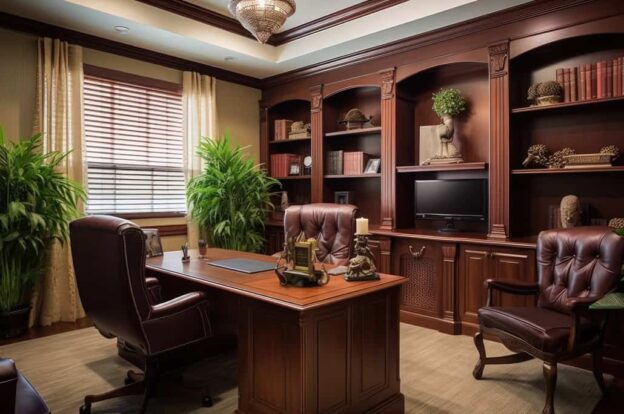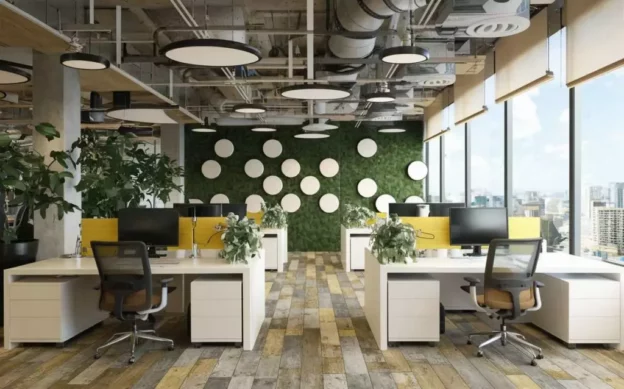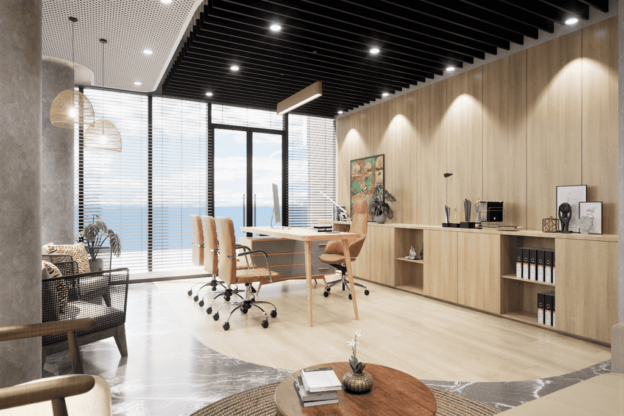Designing an office cabin is more than just selecting furniture and organizing space—it’s about creating a functional, comfortable, and inspiring environment that enhances productivity and reflects the professional image of your organization. From choosing the right desk to optimizing storage solutions, every detail matters. Let’s dive into the key considerations when designing an office cabin and explore some practical furniture and layout solutions.
1. Purpose and Functionality
Before diving into the design, it’s essential to define the purpose of the office cabin. Is it a private office for a company executive, a quiet space for focused work, or a meeting room for small group discussions? The purpose will influence both the type of furniture you need and how you arrange it.
Key Considerations:
- Work Needs: What activities will take place in the cabin? Will it be used for meetings, video conferences, or individual work?
- Space Usage: How much space will the furniture occupy, and will it allow for easy movement?
- Technology Integration: Consider the placement of outlets, cords, and equipment to ensure seamless technology use.
2. Desk Selection: The Heart of the Office
The desk is the focal point of any office cabin, and choosing the right one can make all the difference. For most professionals, a spacious, ergonomic desk is key to staying organized and productive. The design of the desk should reflect the style of the cabin while offering enough surface area for daily tasks.
Desk Solutions:
- Executive Desks: Large and imposing, these desks offer ample workspace and often come with built-in storage. They are ideal for cabins where prestige and authority are key.
- Standing Desks: A height-adjustable desk can enhance comfort and support health by allowing users to switch between sitting and standing throughout the day.
- Compact Desks: If the cabin is small, a compact desk with storage drawers or built-in shelving can maximize space without compromising functionality.
3. Chair Comfort: Ergonomics Are Essential
A high-quality ergonomic chair is one of the most important investments for an office cabin. A well-designed chair supports posture, reduces the risk of back pain, and enhances overall comfort, which can improve focus and productivity.
Key Features to Consider:
- Adjustability: Look for chairs with adjustable seat height, lumbar support, and armrests.
- Padding and Upholstery: Ensure the seat is adequately padded for comfort, and choose upholstery that is breathable and easy to maintain.
- Swivel Base: A chair with a swivel base provides flexibility and ease of movement.
4. Storage Solutions: Keep It Organized
Effective storage is crucial for maintaining an organized and clutter-free office cabin. The right combination of cabinets, shelves, and drawers will ensure that everything from documents to office supplies is stored neatly and easily accessible.
Storage Solutions:
- Filing Cabinets: Essential for storing important documents and paperwork, filing cabinets can be freestanding or integrated into desks.
- Bookshelves: Wall-mounted or freestanding bookshelves are great for displaying books, awards, or decorative items while providing extra storage space.
- Built-in Storage: If space is limited, built-in storage units can be designed to blend with the cabin’s overall decor, offering hidden storage solutions.
5. Layout and Space Planning: Maximizing Efficiency
The layout of the office cabin should balance comfort, functionality, and aesthetics. Proper space planning ensures smooth movement within the cabin, creates a sense of openness, and allows for a comfortable work environment.
Layout Solutions:
- Desk Placement: Position the desk to take advantage of natural light, ideally near a window. The desk should face the door to create a sense of authority while also providing a view of the room.
- Zoning: Divide the office into functional zones. For instance, the primary work zone around the desk, a meeting or seating zone with chairs or a small couch, and a storage zone with filing cabinets or bookshelves.
- Clear Pathways: Ensure that pathways within the office are clear and unobstructed. Avoid overfilling the cabin with furniture, which can make the space feel cramped.
6. Lighting: Creating the Right Ambiance
Lighting plays a significant role in productivity and mood. In an office cabin, a mix of natural and artificial lighting is ideal for creating a well-lit and inviting space. Overhead lighting, task lighting, and ambient lighting should work together to reduce eye strain and illuminate the space effectively.
Lighting Solutions:
- Task Lighting: A desk lamp with adjustable brightness is crucial for focused tasks like reading and writing. Opt for LED lamps that are energy-efficient and provide ample light without glare.
- Ambient Lighting: Incorporate soft ambient lighting to create a warm and welcoming environment. Wall-mounted sconces or floor lamps can be great additions.
- Natural Light: Maximize the use of natural light by keeping window treatments minimal. If possible, position the desk to face the windows for an open and airy feeling.
7. Personal Touches and Decor
Personalizing the office cabin with decor and artwork adds character and reflects the occupant’s personality. While functional furniture is essential, aesthetics also play a crucial role in creating a space that feels inspiring and comfortable.
Decor Solutions:
- Artwork: Choose artwork that reflects your style and inspires creativity. Framed prints, paintings, or even personal photos can add a personal touch to the office.
- Plants: Incorporating greenery into the design boosts the aesthetic appeal and has been shown to improve air quality and reduce stress. Small potted plants on the desk or larger floor plants in the corners can enhance the atmosphere.
- Rugs and Textiles: A well-placed rug can add warmth and texture to the office. Choose neutral tones or bold patterns, depending on the style of the cabin.
8. Acoustic Solutions: Reducing Noise Distractions
Noise can be a significant distraction in an office environment. Acoustic treatments can help reduce noise levels, especially in open-plan or shared office buildings where external sounds may be a problem.
Acoustic Solutions:
- Acoustic Panels: These can be installed on walls or ceilings to absorb sound and minimize noise disruptions.
- Carpet and Curtains: Soft textiles like carpet and heavy curtains can help dampen sound and create a quieter work environment.
- Soundproofing: For cabins that require complete privacy, soundproofing the walls may be necessary to eliminate external noise.
Conclusion: Designing for Functionality and Comfort
When designing an office cabin, it’s essential to consider both the functional needs and the comfort of the occupant. From selecting ergonomic furniture to planning an efficient layout, every detail contributes to creating a productive and relaxing work environment. Incorporate flexible storage solutions, thoughtful lighting, and personal decor to reflect both style and purpose, transforming the office cabin into an inspiring and efficient workspace.
Crafting Collaborative Spaces: Unique Furniture Ideas for Your Conference Room


